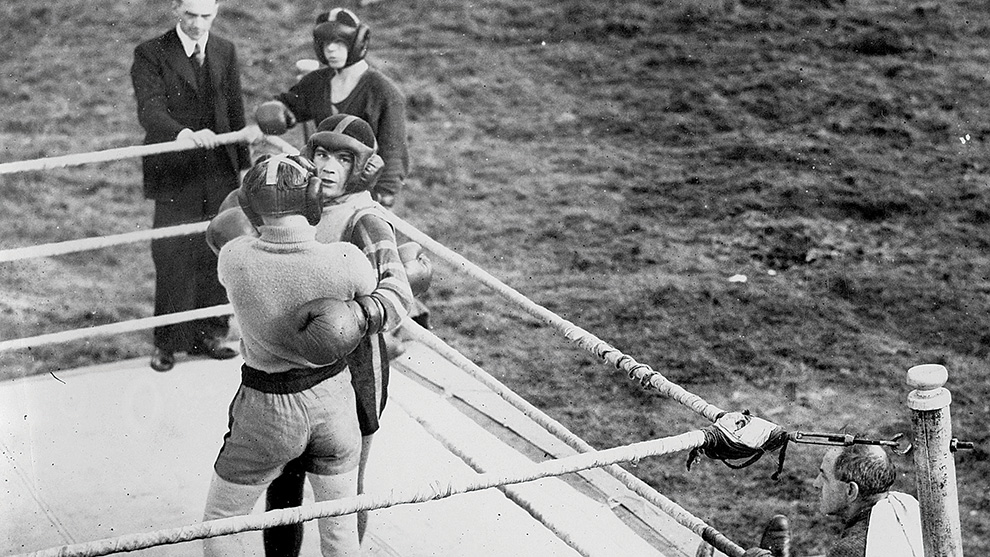WHILE cataloguing my collection recently I came across a series of press photographs of Benny Lynch training for various contests back in the late 1930s. Benny Lynch is one of a small band of UK boxers for whom the public holds a particular fascination. This will probably be because of his early, tragic demise, as much as it will be due to his boxing career, which was both meteoric and sensational, and also controversial. Among Scottish fans he is a legend, and he will have few competitors if one had to pick the best Scottish fighter of the 20th century. Ken Buchanan is, I think, the obvious other candidate.
Benny used to favour the Campsies, a range of hills 12 miles to the north of Glasgow, for his training camps. He had been used to training in the Cathkin Braes prior to this but, once Benny and his manager George Dingley had seen the Campsies, that was that. As John Burrowes wrote in his 1982 biography of Lynch, Dingley stated “What a wonderful, truly wonderful, place for a training camp. It has everything for it. Benny could run up the hills, take in all that pure air, and there’s the Inn to look after him. Nothing could be more perfect”.
Benny loved to get away from the hectic pace of Glasgow, to train in the countryside and he also regularly set up camp in Stirlingshire. This week’s pictures show him in two different camps there. He can be seen fetching water from his caravan whilst training at Dungoyne for his June 1937 contest with Jimmy Warnock. His trainer, Alec Lambert, can be seen in the background. Alec was a good fighter himself, boxing Ted Kid Lewis in 1913 for the vacant British featherweight title and winning the 1910 ABA championship at the same weight. Benny’s father stayed with him in the caravan and did all the cooking for Benny whilst there.
He can also be seen sparring with that great little flyweight, Tiny Bostock of Leek, for his 1936 fight with Pat Palmer. Benny is peering up at the camera, and I cannot work out how the photographer managed to get himself so high up this close to the ring, but it is an exquisite shot. Willie McCamley, another decent professional at the time, can be seen in the corner waiting his turn to get in with Benny. This camp was at Drymen and was just a short walk from the Bonnie Banks of Loch Lomond. No wonder Benny did so well against Palmer, who he dispatched in eight rounds to retain his British, European and world flyweight titles.
When in the Campsies, the ‘boys’ would travel up from Glasgow to watch him train and in 1937, when he was in training for his epic contest against the unbeaten Peter Kane, more than 4,000 turned up to watch him. There is a famous picture of Benny hitting the punchball in the ring, with his name emblazoned on his shirt, and that photograph was taken in front of this large crowd.
It is sad to relate that when Benny’s short career was over, and he was touring the boxing booths and living off his name, that he once again journeyed to the small towns and villages in rural Scotland, where he had once trained. This time, however, it was as a washed-up and bloated ex-champion who was making the visits, and he was scrapping against nobodies, for peanuts, in the shabby old booths of the day.
Let us remember the great Benny Lynch. I think his greatest fight was the one with Kane and, as BN reported at the time, “With probably the most magnificent display of box-fighting ever served up by any British champion, Benny Lynch retained all three of his titles. Lynch was brilliant and magnetic in victory, Kane wonderful in defeat. The champion turned out his most classic display ever and proved himself the finest flyweight in the world”.
